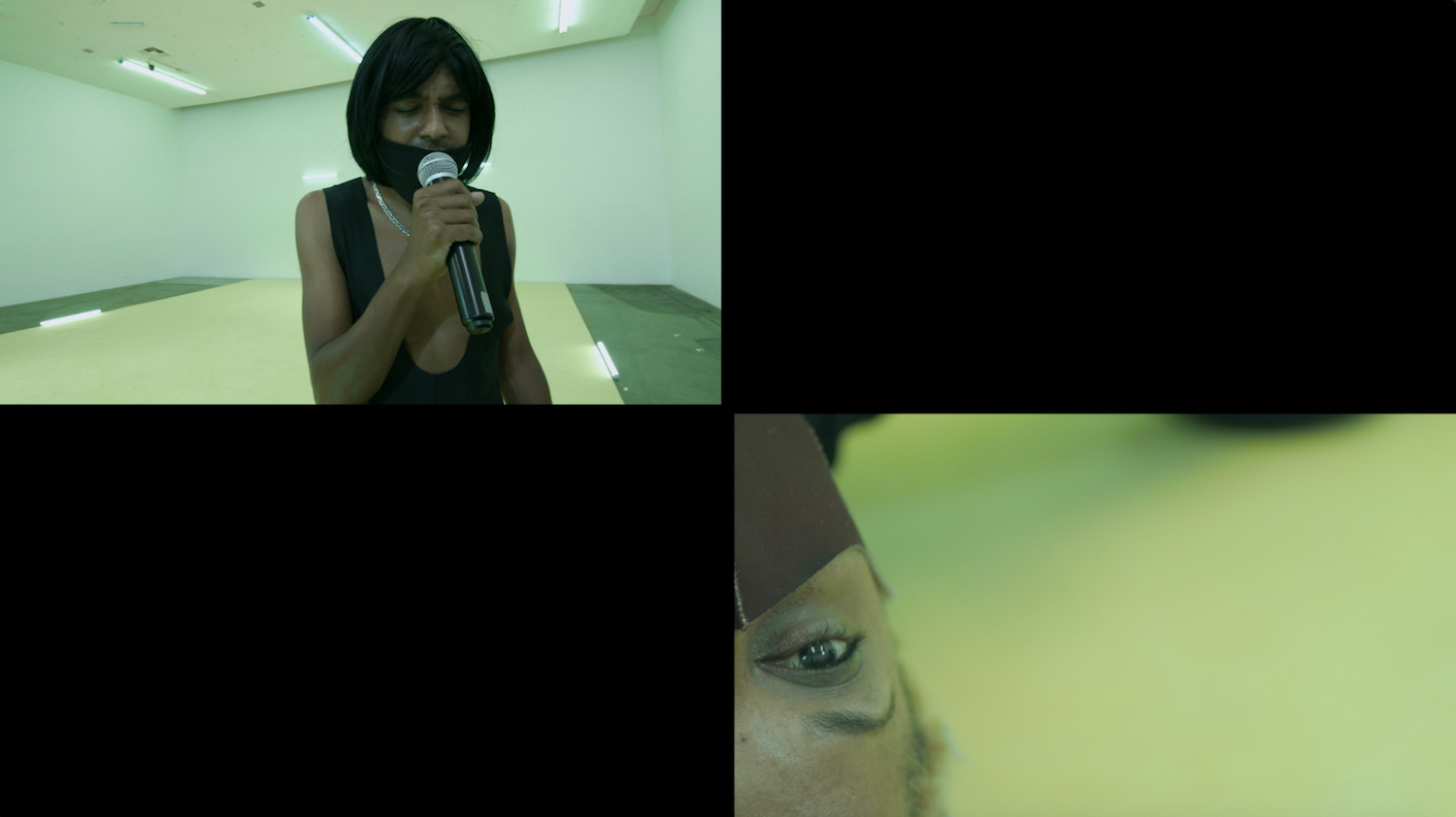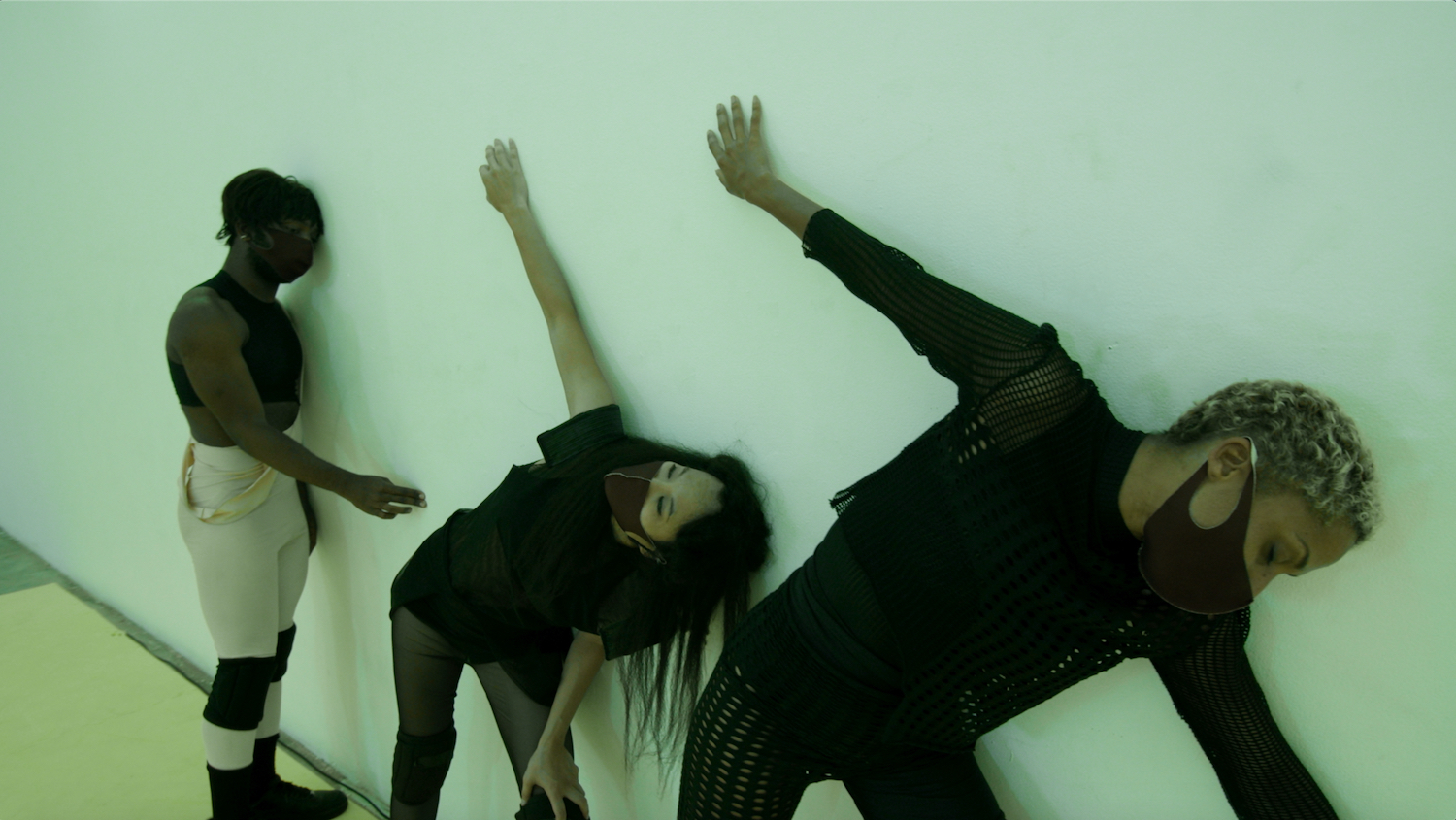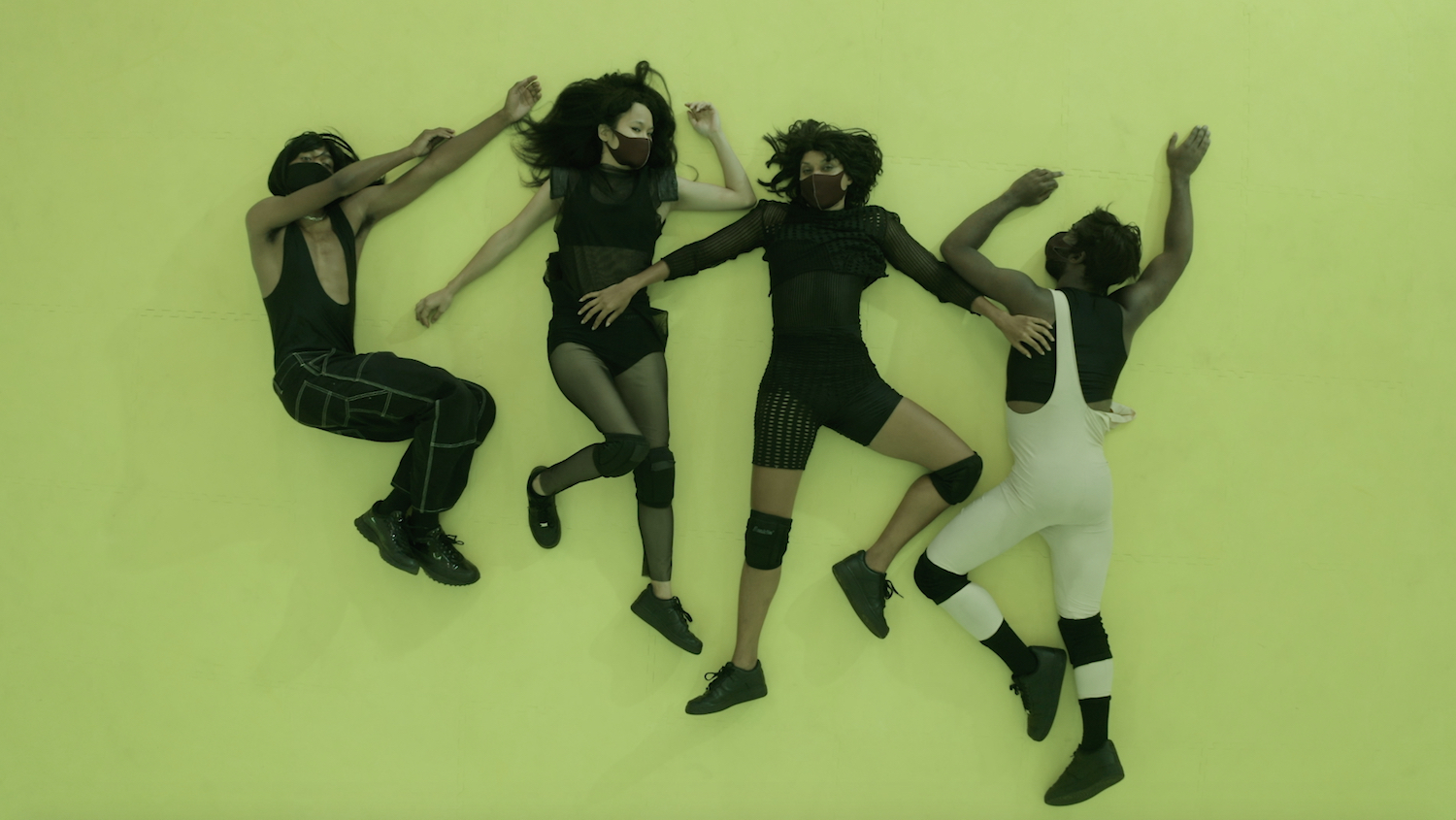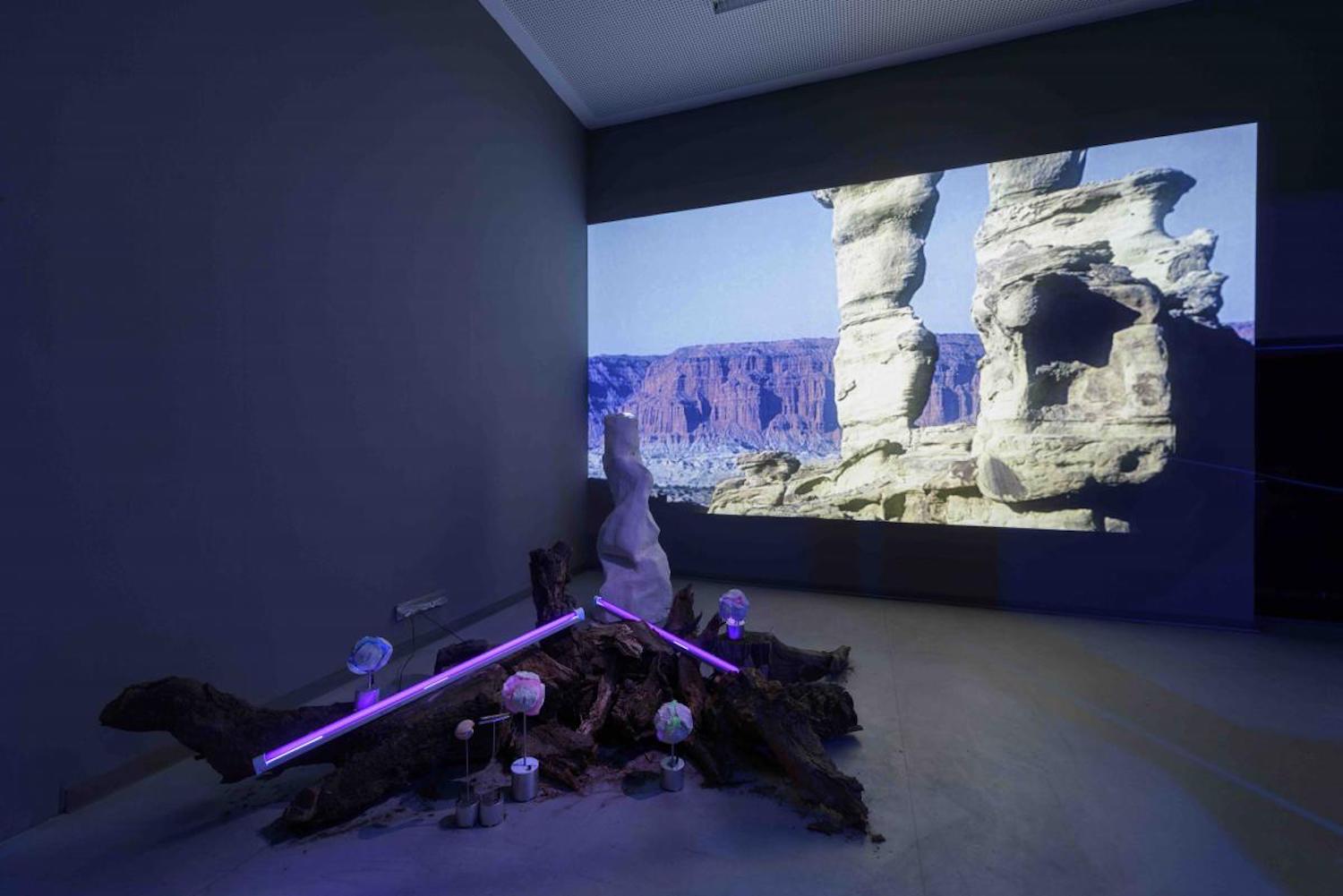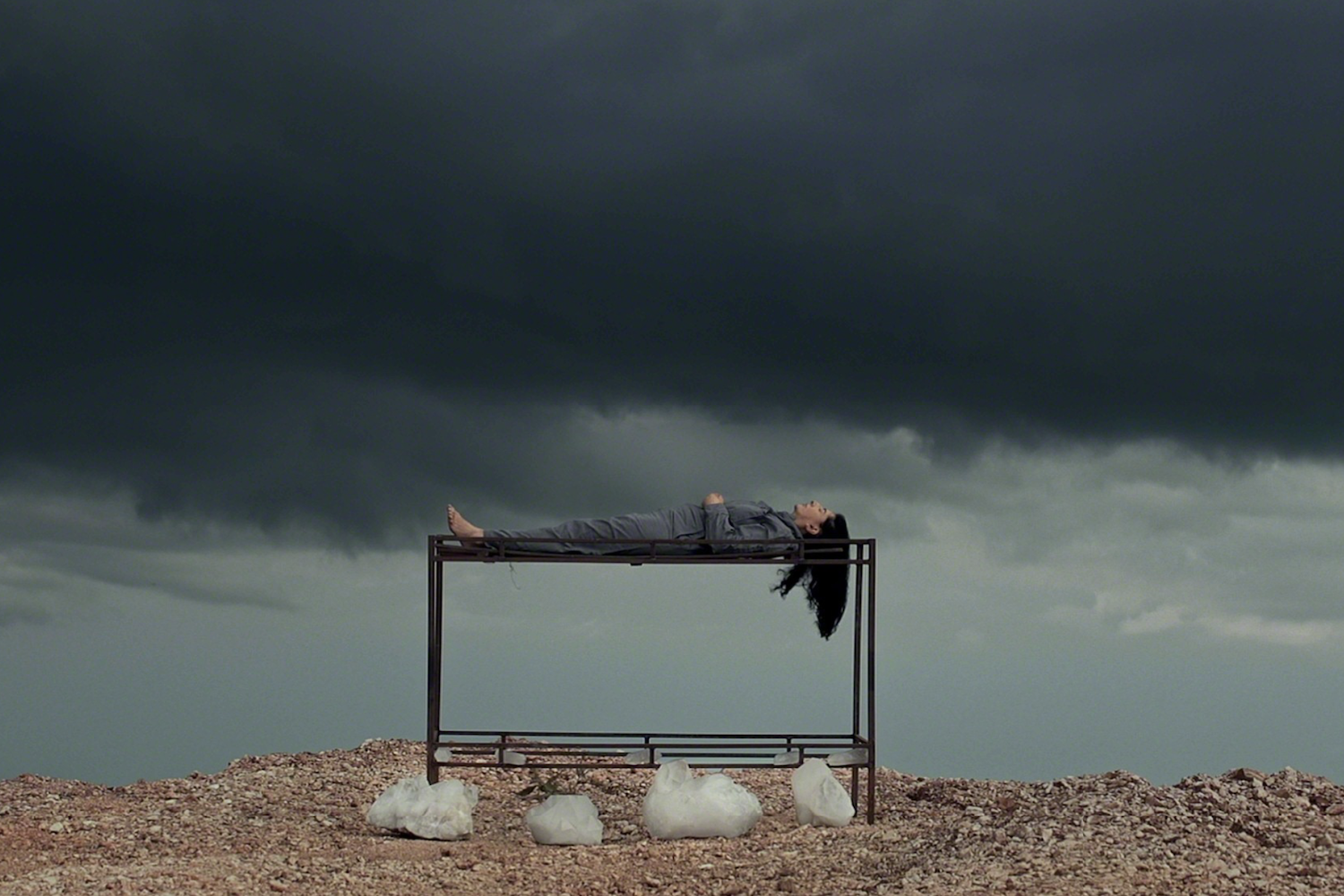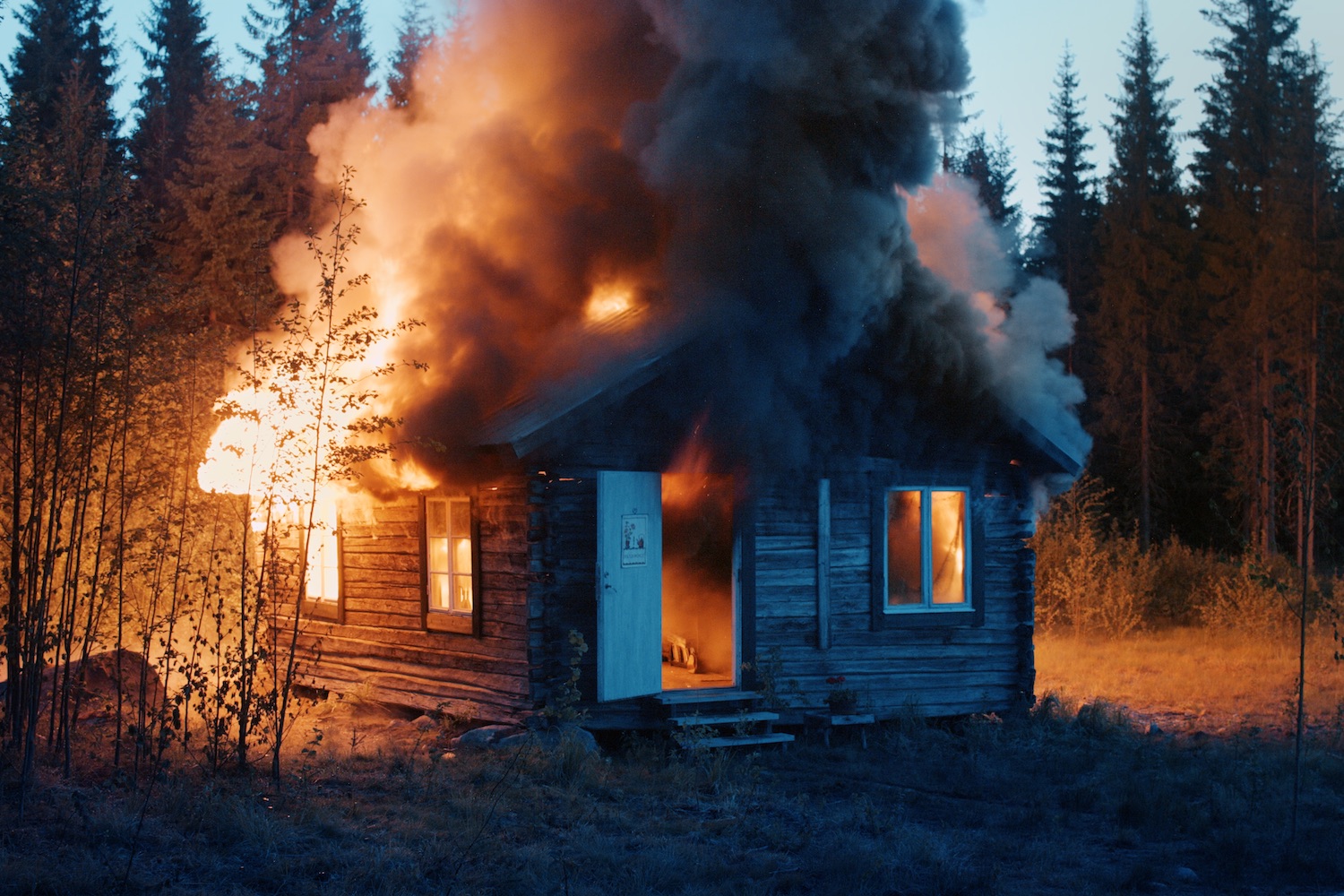Dance Office is a column dedicated to contemporary dance and performance art.
Ligia Lewis, deader than dead, 2020. Performance at Hammer Museum, Los Angeles, 2020. Courtesy of the artist and Hammer Museum, Los Angeles.
Play. The view is full screen, a square of lime-yellow linoleum imparts its cool tint to the whole room via florescent tube lights on the wall and along the edges of the stage. Austyn Rich, one of the performers, begins scraping his feet along the floor, whispering something that gets lost in his quickened breath, the breath of a dancer warming up — or the strained breath of someone muttering under their mask as they move. The thud of his feet on the linoleum sounds, at times, like a pulse about to slow and stop.
The screen splits in two, then into three parts, then into two, three, four. The view returns to full screen, then breaks up again and continues that way. All unity of vision is unexpectedly lost. The stage is only partially shown, and the camera shoots from different angles as if in a choreographic exercise, definitively abandoning the frontal view found in theater and consciously guiding the audience’s eyes.
Conceived and directed by Ligia Lewis for Made in L.A. 2020, deader than dead, originally performed by ten people, was readapted for four performers and filmed for the websites of the Hammer Museum and The Huntington. The change of medium adds intriguing new elements to this work by Lewis, whose performances combine body movement, facial expression, dance, music, and speech. The new single-channel work masterfully conveys the artist’s dramaturgical yet unconstrained talent. Working from the concept of emotional distance as stasis, paralysis, and death, Lewis constructs a piece that in some ways still draws on theatrical tradition — a key element of her performative grammar — but which now carries the performance inside the screen, making what we might call her first “cross-media” leap.
This leap into digital has led to an adaptation of the content and a recalibration of the methods Lewis uses in combining body, music, and speech. Here she adjusts these elements to the movements and time of the camera — and thus to the reception of the piece she has decided to offer the viewer, which is in some ways incomplete. The dead corner of the Hammer Museum that Lewis chose as an ideal setting for the living corpses of deader than dead has been scaled down in the video to a standard stage, thus letting go of the initial logic behind its spatial and contextual location. In this square space, which on film loses every reference to a possible location, Lewis stages the transience of self. An individual/actor recites a personal soliloquy within a dissonant chorus.
Ligia Lewis, deader than dead, 2020. Performance at Hammer Museum, Los Angeles, 2020. Courtesy of the artist and Hammer Museum, Los Angeles.
Life’s but a walking shadow, a poor player that struts and frets his hour upon the stage and then is heard no more – says Macbeth.
Your imagination being fed by the concrete metaphors, concrete images and pictures can then feed into the body, into gestures, into timbre of voice, into eyelids, and here comes the word which is important, tomorrow, and tomorrow, and tomorrow – Lewis replies.
Tomorrow, and tomorrow, and tomorrow creeps in this petty pace from day to day, to the last syllable of recorded time – insists Macbeth.
The ghost of Macbeth haunts Lewis’s private soliloquies, alternating with Rich’s whispered words and Jasper Marsalis’s synthesized voices. As Jasmine Orpilla performs Guillaume de Machaut’s medieval lament Tels rit au main qui au soir pleure, the three dancers move wearily across the back of the stage, hinting at a dynamism that never reaches any culmination. Their movements are jerky, never fully inhabited, drained of power. Muddled, schizophrenic gestures and tormented gazes. Their bodies, now devoid of energy, begin to rely on each other for movement, with deafening, echoing thumps of limbs on the ground. Pause. Techno music starts to come out of the speakers, marking a change in direction. The angle shifts to a view from above, the two bodies fall in a tangle, the camera zooms in on Orpilla’s face as she lies prone; Lewis lifts her head then lets it fall senseless. But when the camera zooms out again, there seems to be no true drama — more like a note of wry humor. Their bodies begin to move again, frenzied and out of control. The camera moves in and out on their straining muscles, and the scene starts to look like the inside of a club. Rich drags the others here and there, off and on stage. They launch into a mash-up of group dances, almost like an aerobics class from the ’90s, and end up standing side by side, groaning, screaming, raving.
Then they let themselves crash to the ground, writhing in a delirium that goes on and on and on.
Your imagination being fed by the concrete metaphors, concrete images and pictures can then feed into the body, into gestures, into timbre of voice. This is not unlike something that Alberto Boatto said in the late ’60s about performance art, and more specifically about its genesis. The critic linked it to the events of May ’68 in France, echoing the sociological thesis of Edgar Morin, who noted that in times of social upheaval — like that one — emotional impulses and turmoil tend to be channeled into experimentation.1
This may be the aspect of performance that has remained intact, powerfully reemerging in the last decade; this is the primary motivation behind the need to use the body, as the only possible “agent” for proclaiming and presenting a given state of existence.
Lewis has always worked through and with the body to actively explore questions of racial superiority and inferiority, of Blackness as a status and condition; here her danses macabres are a mordant take on the incessantly reiterated images of dead Black bodies, on apathy, or the attempt to portray death as a condition, possibility, predisposition, prophesy. But nothing is truly portrayed, nothing is pinned down, there is no personification. There are no divisions between onstage and “the wings”; the former is no longer the special arena where stories, hierarchies, and roles are acted out, with necessary pauses to let the audience in. The partial way in which phenomena are shown to us, and in which images, media, and historical memory operate today, adds new meaning to performative practice, which is forced to rethink its status, the components that go into its production, and its possibilities in other media. And while an artistic creation is no longer conceived in relation to its medium, it is also true that contemporary performance hinges on the vestige of another medium, i.e., editing. This is a new way of using time and ideas about the body, which has been “corpsed” — in David Marriott’s sense of the term2 — and thrown out of its “role.” The borrowed vestige that performance hinges on today lies outside its own body, residing elsewhere: in those partial gaps that can be found within combined means of production.



